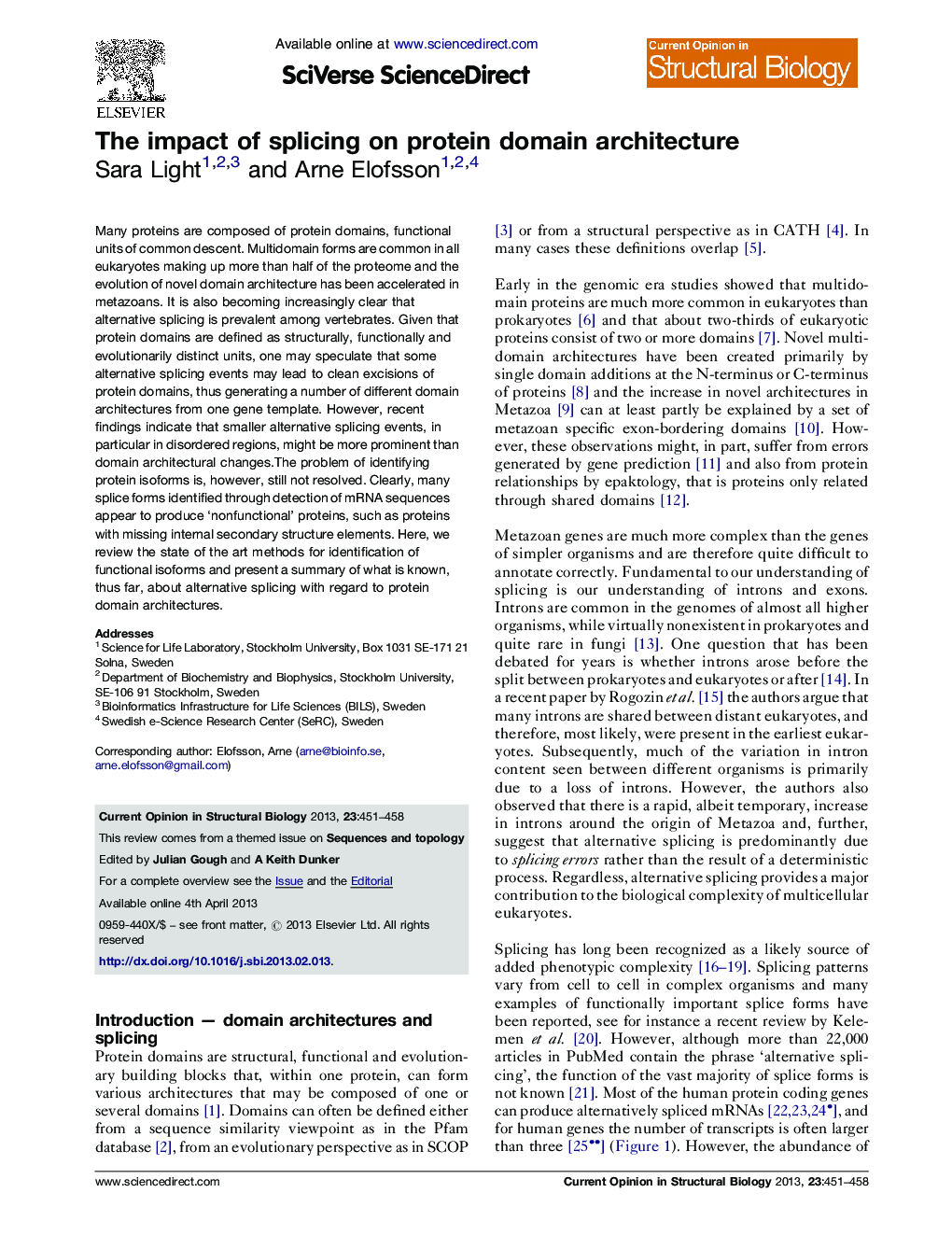| Article ID | Journal | Published Year | Pages | File Type |
|---|---|---|---|---|
| 1979137 | Current Opinion in Structural Biology | 2013 | 8 Pages |
•Many splicing isoforms appear to be nonfunctional.•Among functional isoforms domain borders tend to be conserved.•Examples of domain architecture change involving repeat domains have been reported.•In order to identify functional isoforms proteomics studies are needed.•Alternatively spliced products are enriched in intrinsically disordered regions.
Many proteins are composed of protein domains, functional units of common descent. Multidomain forms are common in all eukaryotes making up more than half of the proteome and the evolution of novel domain architecture has been accelerated in metazoans. It is also becoming increasingly clear that alternative splicing is prevalent among vertebrates. Given that protein domains are defined as structurally, functionally and evolutionarily distinct units, one may speculate that some alternative splicing events may lead to clean excisions of protein domains, thus generating a number of different domain architectures from one gene template. However, recent findings indicate that smaller alternative splicing events, in particular in disordered regions, might be more prominent than domain architectural changes.The problem of identifying protein isoforms is, however, still not resolved. Clearly, many splice forms identified through detection of mRNA sequences appear to produce ‘nonfunctional’ proteins, such as proteins with missing internal secondary structure elements. Here, we review the state of the art methods for identification of functional isoforms and present a summary of what is known, thus far, about alternative splicing with regard to protein domain architectures.
